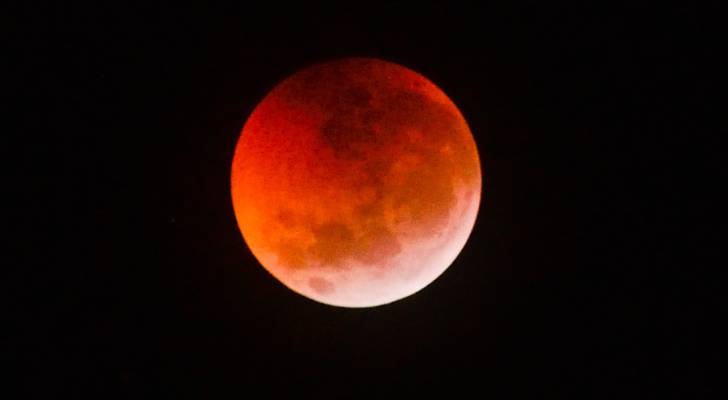Jordan to witness rare Blood Moon on Sunday
Jordan’s skies will be treated to a rare total lunar eclipse (Blood Moon) on Sunday, the longest of its kind since 2022. The astronomical event, which will see the moon turn a copper-red color as it passes through Earth’s shadow, is highly anticipated by astronomers and enthusiasts.
Key Times for Lunar Eclipse in Jordan
According to Dr. Ammar al-Sakji, head of the Jordanian Astronomical Society, the moon will enter Earth's penumbra at 6:28 PM Amman time, though it will be below the horizon. The moon will rise at 6:47 PM in the penumbral stage.
- Partial Eclipse begins: 7:27 PM
- Total Eclipse begins: 8:30 PM
- Peak of Eclipse: 9:11 PM
- Total Eclipse ends: 9:52 PM
- Phenomenon ends: 11:55 PM
The total duration of the phenomenon will be 5 hours and 8 minutes, with the total eclipse phase lasting for 82 minutes. Al-Sakji confirmed the event will be visible across Jordan, as well as in Asia, Africa, Europe, and Australia.
Public Viewing Events
The Jordanian Astronomical Society has invited the public to a viewing event at Sports City (Gate 3, near Martyr's Monument) starting at 7 PM Telescopes will be provided for photography and observation.
The society also confirmed it will provide a live broadcast of the eclipse through media outlets and social media platforms. The best time for viewing the eclipse is between 8:30 PM and 9:52 PM.
Why the Moon Turns Red
Dr. Hana Sabat, director of scientific affairs at the Regional Center for Space Science and Technology Education for Western Asia, explained that the moon takes on its red color during a total eclipse because Earth's atmosphere filters sunlight. The atmosphere scatters shorter wavelengths of light, like blue, while allowing longer wavelengths, like red and orange, to pass through and refract onto the moon's surface.
Tips for Observers
Dr. Anas Sawalha, a member of the International Astronomical Center, said the eclipse can be viewed with the naked eye without special equipment. However, he recommended using cameras or phones on a tripod and adjusting the exposure time, especially during the total eclipse phase. He also stressed the importance of choosing an open location with a clear eastern horizon to watch all stages of the phenomenon.




